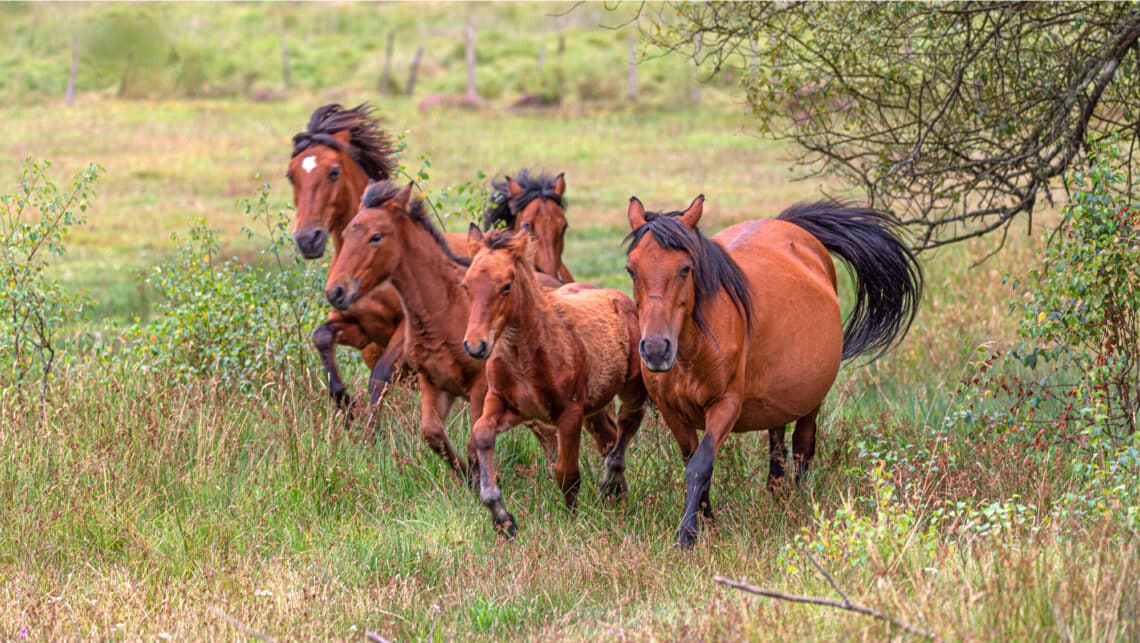
A deeper understanding
Have you ever stopped to consider what instincts drive your horse’s behaviour? NICOLE TOUGH shares some fascinating insights on the topic.
Understanding what drives our horses can help us train them. A horse’s behaviour is determined by automatic instincts and needs almost outside of their control. These include physiological, social and sexual needs, the instinct to seek safety, and the need for serenity.
Physiological
Horses have inherent needs for food, water, rest/sleep and exercise that must take precedence over our desire to train them for sport. If a horse tires during a training session, it is their physiological need for rest that will dominate. Trainers know the best reward for a horse’s effort is giving them a little break. We also know that short breaks between intense training exercises allow the horse to partially recover, giving working muscles the chance to reduce their lactic acid load and replenish their supply of oxygen. Like human bodies, horses develop more suppleness and strength when pushed a little outside their comfort zone. The saying ‘no one gets better in their comfort zone’ applies to horses too. However, trainers must never compromise the horse’s physiological needs for their own sporting goals.
These physiological needs are also the reason a horse learns best when the rider makes it physically easier to do what we want them to do; asking for canter on approaching a corner rather than out in the middle of the arena, for example. And if a horse is ridden when it has excessively sharp teeth or an ill-fitting saddle, pain will compromise their physiological needs and will result in an unwillingness to train.
Safety
A herbivorous mammal, the horse is a prey animal and as such has an inherent flight instinct that kicks in when they feel threatened. This automatic nervous response is triggered by the adrenal gland, which create the hormone adrenalin. If the horse feels unsafe, they don’t think, they run. Some of our domestic horses would definitely survive in the wild; while some would definitely not. In other words, some horses have a stronger flight instinct than others, which can make them spooky or suspicious.
It is possible to accidentally trigger the flight response if we work the horse in extreme wind or during a thunderstorm. Similarly, a horse that is confused or unfamiliar with their surroundings can feel insecure, so it is important to take the time to relax and settle them in before expecting anything of quality from them. This is why we should arrive ahead of time to a competition or a lesson to allow our horse to relax before tacking up.

Social
The horse is a herd animal with strong social instincts, and as such, horses like to be with other horses. In nature, a bond develops between every member within the group. Each horse has a hard-won place within the social hierarchy, with one horse as the leader. This is useful to know as it often explains a horse’s behaviour at a competition, when they call out to other horses, or try to return to their mates. As the saying goes –share a float, married for life! This social need can be seen at its worse in a horse with separation anxiety, and can be very hard to manage in a sporthorse.
It is important for a trainer to try and control this natural trait, which is achieved by establishing a social relationship with the horse. This new relationship, in which we are the leader, must be based on mutual respect. The trainer must teach the horse what is acceptable behaviour, and in return, the horse should be treated fairly and with equal respect.
Sexual
These needs can be managed and/or repressed. Obviously in a gelding they will be absent, and a well-trained stallion can be taught only to perform with certain stud conditions. Mares can be more difficult in peak oestrus, but there are natural and medical depressants to help if need be.
Serenity
It is this inherent need for peace that allows us to train horses. A well-trained horse responds to aids simply to be left in peace. The pressure/release method we use to train domesticated horses is based on the fact that given an option, the horse will choose the path of least resistance. If we use clear and precise aids to apply a level of pressure, and then release that pressure following the correct response from the horse, we can train them to do what we want – and we can use this method to care for them too.
The onus is on us to have good control of the aids and good feel to reward at the right moment. Vital to this concept is the understanding that the horse learns not when we apply pressure, but at the moment it’s released, which is why the timing of the reward is crucial.
To have good timing, trainers need control over their body position, seat, legs and rein aids. The rider who is still developing feel can be a source of annoyance and/or confusion to the horse, and so are better suited to a horse whose flight instinct is not so strong!
The good trainer is always assessing how the horse is reacting, and the ability to read them is vital to training in a sympathetic way.
Interested in lessons or a clinic with Nicole? Visit Nicole Tough Dressage for further information.



